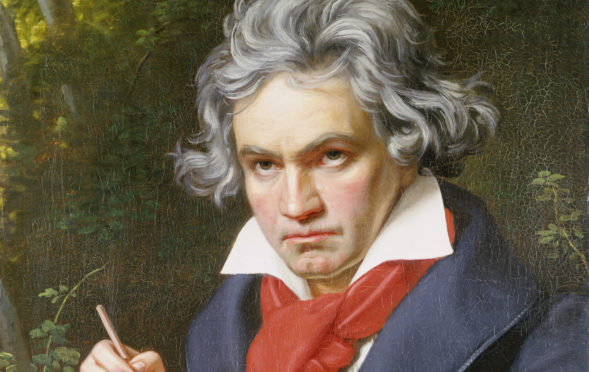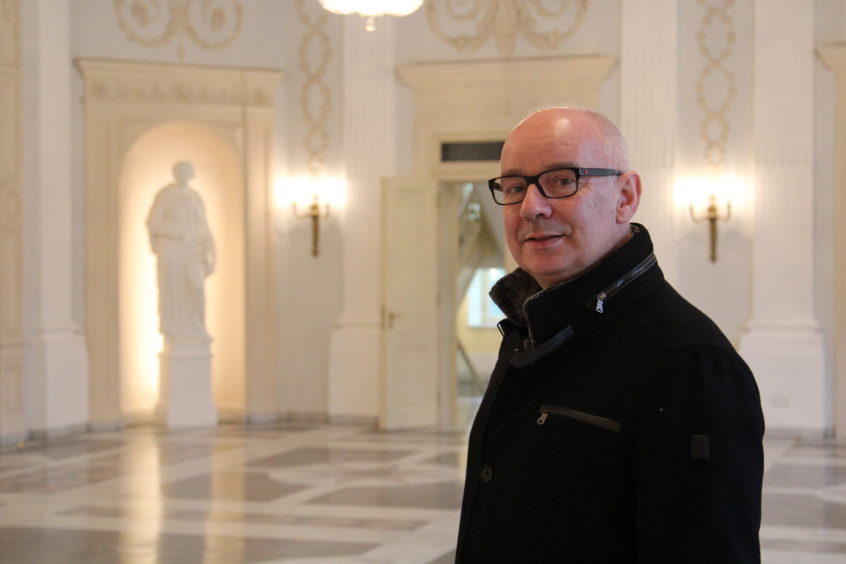
A new documentary for BBC Alba has revealed that Beethoven made classical arrangements of a number of traditional Gaelic songs – although the often-tragic lyrics were never revealed to him.
The acclaimed German composer, who was born 250 years ago this month, created new versions of 47 Scottish melodies from 1809 to 1820 for the Edinburgh-based folklore collector and publisher George Thomson.
The compositions were unearthed by German musicologist and Gaelic scholar Dr Michael Klevenhaus, who has spent five years researching the Gaelic origins of Beethoven’s compositions.
It was when reading a scholarly work by piper Allan MacDonald that he first became aware of the connections.
One of MacDonald’s footnotes stated that the song Enchantress Farewell, arranged by Beethoven with words by Sir Walter Scott, was based on Mhnathan a’ Ghlinne Seo (Women of the Glen).
Dr Klevenhaus immediately suspected that there might be more Gaelic tunes lurking in the works of the maestro and he embarked on a journey of discovery to find the original Gaelic music.
In the documentary airing on Wednesday, Dr Klevenhaus travels from the birthplace of Beethoven, Bonn, to Vienna, where he worked.
He also travels through the Scottish Highlands, islands and lowlands to carry out his research and meet MacDonald and other Gaelic singers and musicians.
With their help, he reveals the hidden Gaelic melodies that underlie the Beethoven compositions.
He also uncovers that the melodies’ Gaelic origins were deliberately hidden from Beethoven, and the public, by Edinburgh publisher George Thomson, who commissioned the arrangements from the composer.
With the 1745 Jacobite Rebellion still within living memory, Thomson stripped the Gaelic songs of their titles, lyrics and any ‘taint’ of Jacobitism.
Dr Klevenhaus believes there’s a link, for example, between Beethoven’s love song Erin o’ Erin and a song by Sìleas Na Ceapaich about the 1715 Jacobite Uprising.
Dr Klevenhaus said: “Gaelic songs are often highly political, but the meaning of these songs was hidden from Beethoven.
“Beethoven was strongly political, if he had been sent those words what a different song we would have today!
“What would a radical republican like Beethoven have made of a political song by Sìleas Na Ceapaich, about people rising united against the king?
“It’s been fascinating to discover the highly political nature of some of the original songs.
“It seems likely that these songs were deliberately sanitised to make them more suitable for an upper-class Lowland audience.”
Òrain Ghàidhlig Beethoven airs on Wednesday, December 16 at 9pm. Followed by a concert of Gaelic songs and Beethoven’s arrangements of them – Beethoven: A’ Chuirm Ghàidhlig at 10.30pm, both on BBC ALBA.

Enjoy the convenience of having The Sunday Post delivered as a digital ePaper straight to your smartphone, tablet or computer.
Subscribe for only £5.49 a month and enjoy all the benefits of the printed paper as a digital replica.
Subscribe